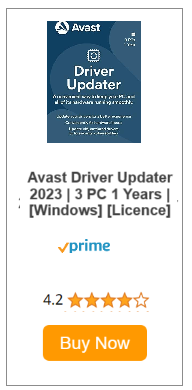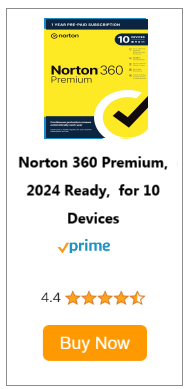Products Tested
Antivirus Debug
Global Search
The Best Antivirus Softwares 2024
Back in the day, the job was easy for the antivirus software – prevent, detect, and remove viruses that were stealthy killing your computer inside.
Coming to 2024, where everything is online, antivirus programs have to do much more. They have to protect you from ever-growing types of malware like ransomware, data-stealing Trojans, adware, spyware, and who-knows-what’s-next!
How We Choose
Testing all these antivirus softwares wasn't an easy task. I had to install & then observe the functionality, ui & effects on the computer. For ranking the antivirus softwares, they have been watched on performance features prices & availability on devices
Performance
The Best antivirus in the year 2024 should be lighter & could be run on lower end systems as well. It should be quick enough to provide realtime protection without raising load on the computer.
Features
The Best antivirus software in 2024 should have the latest & premium features available in all pricing plans. Features like Web advisor, password manager, vpn, anti spyware, anti ransomware, anti adware with online payment protection.
Price
This is where the Best antivirus software in 2024 should be accessible by majority of the people. Thats possible only when the price of the best antivirus should be as low as possible. So that the common man can easily secure this data & privacy online.
Our Picks
- Norton
- Mcafee
- Webroot
- AVG
- Trend Micro
- Kaspersky
- Avast
- Avast Ultimate 2024
- Norton 360 Deluxe
- Mcafee Total Protection
- Webroot Antivirus Security
Guide to Antivirus Softwares
In a nutshell, antivirus protection is software that preventatively detects, neutralizes then gets rid of malware. Using a regularly updated database of malware and viruses, it runs scans comparing a device’s files to the files in their database. It also scans the device for any suspicious behaviors that could indicate malware, which allows the software to detect malware even if it’s not already in the database. Again, no antivirus protection is 100 percent foolproof, but with up-to-date databases and behavior-based detection, the best antivirus software is your best bet against cyber attacks.
Antivirus software scans for a few things both on-demand and on-access. While an on-access scanner, or OAS, runs in the background of your device, an on-demand scanner, or ODS, only scans when you “demand” a scan manually or schedule scans in advance. But what exactly is the software scanning for, in the first place?
Malware: Malware is an umbrella term that covers a number of different types of cyber threats, including ransomware, adware, and spyware. At its core, though, malware is designed to access people’s devices without their consent or awareness. Once they’ve gained access, malware is used to steal people’s personally identifiable information, which can be used for identity theft, or simply to mess with their settings. Malware can be in the form of computer worms, which are programs that duplicate themselves throughout a network to collapse it. Computer works can exist in email messages or attachments, which is why you should never click on unknown emails. There’s also trojan viruses, malware that’s disguised as legitimate software, just like the Trojan horse, that lets hackers access and control devices, so antivirus can stop hackers. Spyware: Spyware refers to programs that infect devices and collect the user’s information, like their bank and credit card information, names, and more. One type of spyware is keyloggers, which record keystrokes to steal credentials. Ransomware: People aren’t the only things that can be held ransom; devices can be held ransom, as well, if hackers hijack into a computer and block access until a ransom is paid. Adware: Adware hides on devices and shows the user advertisements as well as monitors their online behavior. This helps brands create targeted advertisements based on what the user searches for. Here are steps to remove adware, if need be. Spoofing: Spoofing happens when a person pretends to be someone else to get a user’s credentials so they can access their systems, steal information and spread malware. This can be done through email, websites, texts, GPS, and other methods. Remote access attacks: Next to last, remote access attacks are malicious actions that target either one or an entire network of computers. Rather than affecting the computers themselves, these attacks find the machine’s vulnerable points to view and steal data, introduce malware and viruses, and more. Phishing: In a nutshell, phishing is a form of email fraud that occurs when emails contain malicious attachments to dangerous websites or downloads. Viruses: Finally, a virus is any malicious code or program that attaches itself to legitimate files or programs and corrupts data, harming the software itself.
Antivirus FAQs
Antivirus products work by detecting, quarantining and/or deleting malicious code, to prevent malware from causing damage to your device. Modern antivirus products update themselves automatically, to provide protection against the latest viruses and other types of malware.
A computer virus is malicious code that replicates by copying itself to another program, computer boot sector or document and changes how a computer works. A virus spreads between systems after some type of human intervention.
While free antivirus solutions can protect against known viruses, most cannot detect unknown threats, or malicious files whose signatures the system has not yet identified. Most premium antivirus tools protect against both known and unknown or yet-known threats.
Avreviews2022.online is an independent e-commerce platform offering a variety of products. We are not affiliated with the brands or subscriptions listed here. You can also find these items on the official websites of each brand. Also AVREVIEWS2022.ONLINE is a participant of the Amazon Services LLC Associates Program, an affiliate advertising program which is designed to provide an aid for the websites in earning an advertisement fees by means of advertising and linking to Amazon products.
© All rights reserved AVREVIEWS2022
























